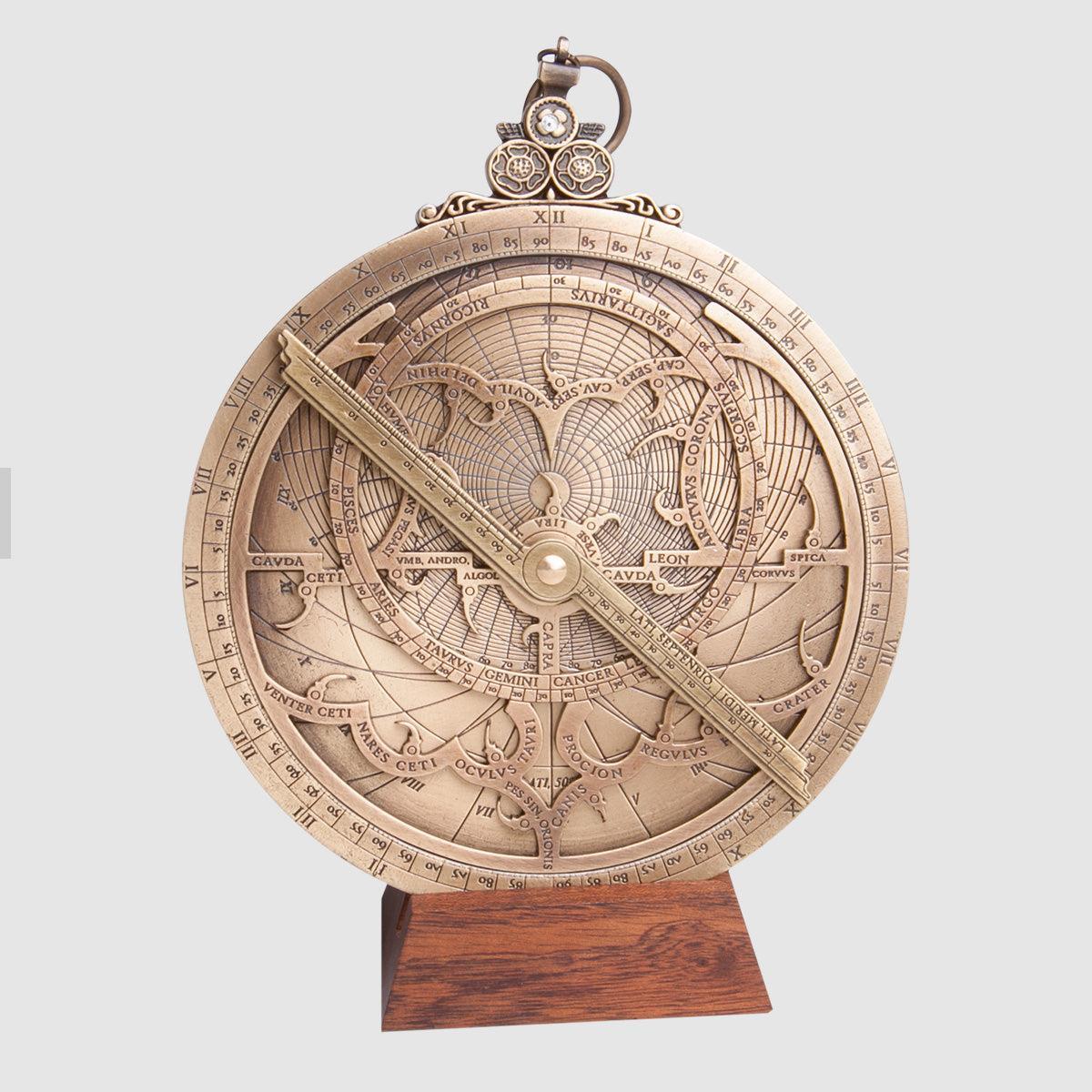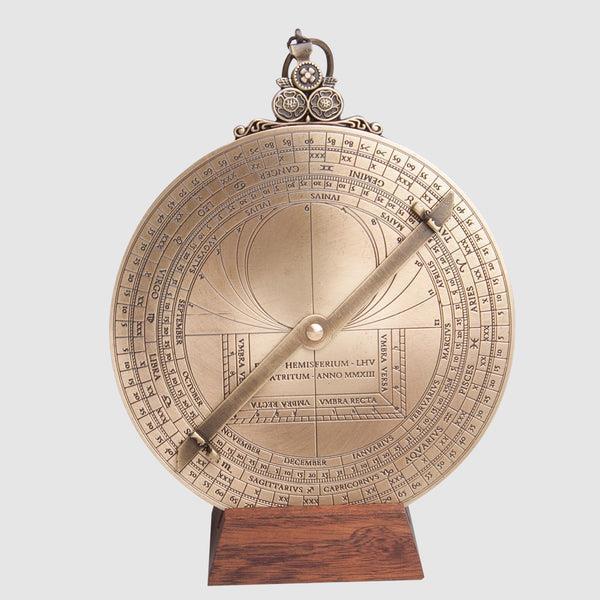Science and Nature Wholesale
Hemisferium Hartmann's Planispheric Astrolabe 15Ø on Stand (Pack of 1)
Hemisferium Hartmann's Planispheric Astrolabe 15Ø on Stand (Pack of 1)
This planispheric astrolabe is set for 50º latitude.
This Planispheric Astrolabe is based on an instrument made by German manufacturer called Georg Hartmann which can be found in The British Museum, London.
In 1518, Georg Hartmann, also known as Georgius Hartman, settled in Nuremberg, where he developed his vast oeuvre. By 1523, Hartmann was at the head of a prolific and successful workshop that specialized in scientific instruments, including sundials, astrolabes, quadrants, and astronomical and astrological compendiums.
His remarkable production made him, probably, the most prolific instrument maker in the first half of the sixteenth century. Hartmann’s devices bear testimony to the great workshop at his command, like an early system of mass production.
Astrolabe, from the Greek, “star searcher”, was introduced to Europe by the Arabs in the early 12th century. It became a vital tool for astronomers, astrologers, and surveyors. This astronomical computer was used to estimate the time, to measure heights of celestial bodies and geographical accidents, determine the local latitude, estimate the sunrise and sunset time and to draw horoscopes.
The astrolabe's importance not only comes from the early development of astronomy but is also effective for determining latitude on land or calm seas. It was less reliable on the moving deck of a ship in rough seas, so the mariner's astrolabe was developed to solve that problem.
In the 9th century, Muslim astronomers improved the device by introducing angular scales and azimuth lines which added to its beauty. To use an astrolabe, the moving parts are first set to a specific date and a specific time. Once set, solar system objects are represented (both visible and invisible) in their relative positions on the instrument.
The typical astrolabe was not a navigation tool, however. The similarly named 'mariner's' astrolabe was used for this purpose and was used widespread in the European Renaissance.
This new astrolabe is made by hand in the same way as astrolabes were over a thousand years ago. However, the map of the sky is up to date for the 21st century.
Attention to detail, historical interest and its beautiful design are brought to life in this elegant astrolabe. It comes complete with a wooden base and a user manual.
The astrolabe measures 180mm in height, 150mm across, and 7mm thick.
Pack Size: 1
Product Code: H37
Our quoted prices are inclusive of VAT (books are zero VAT)
Share





